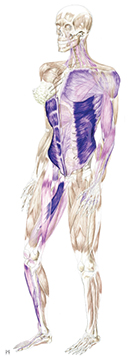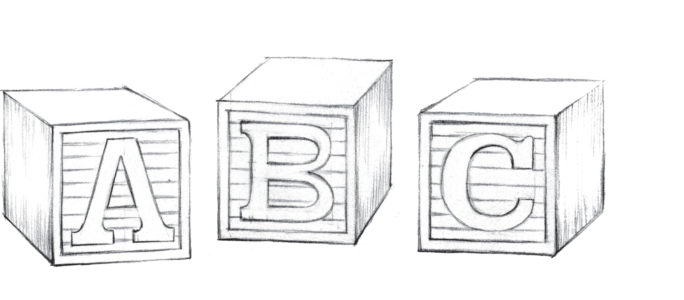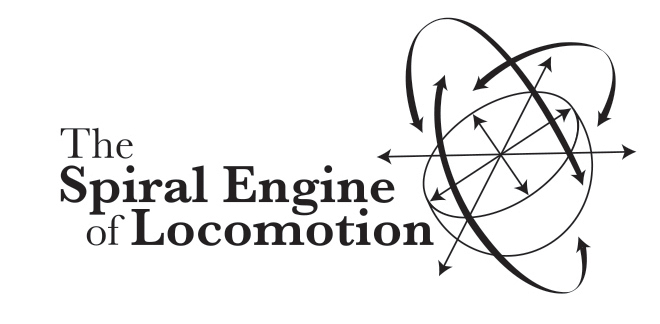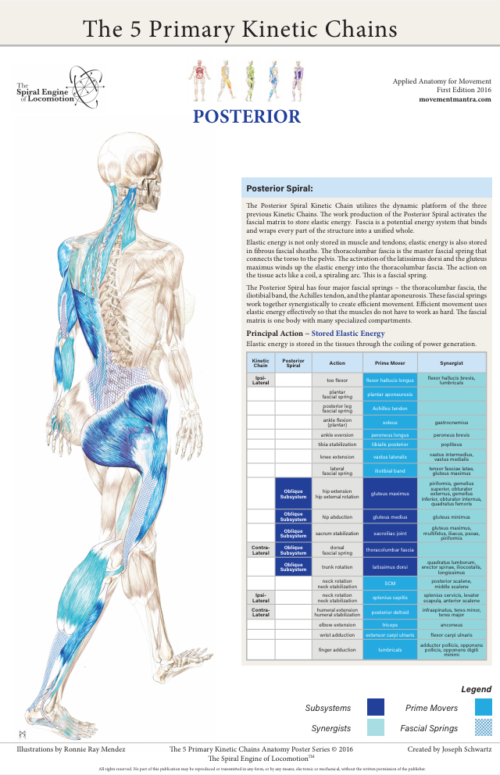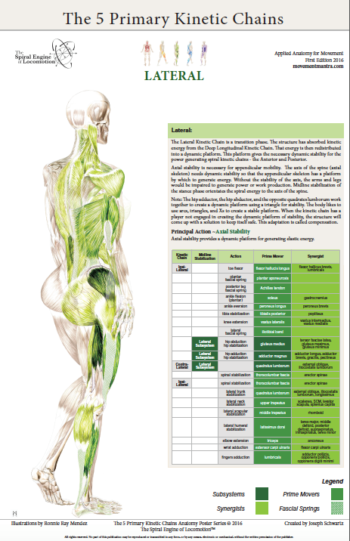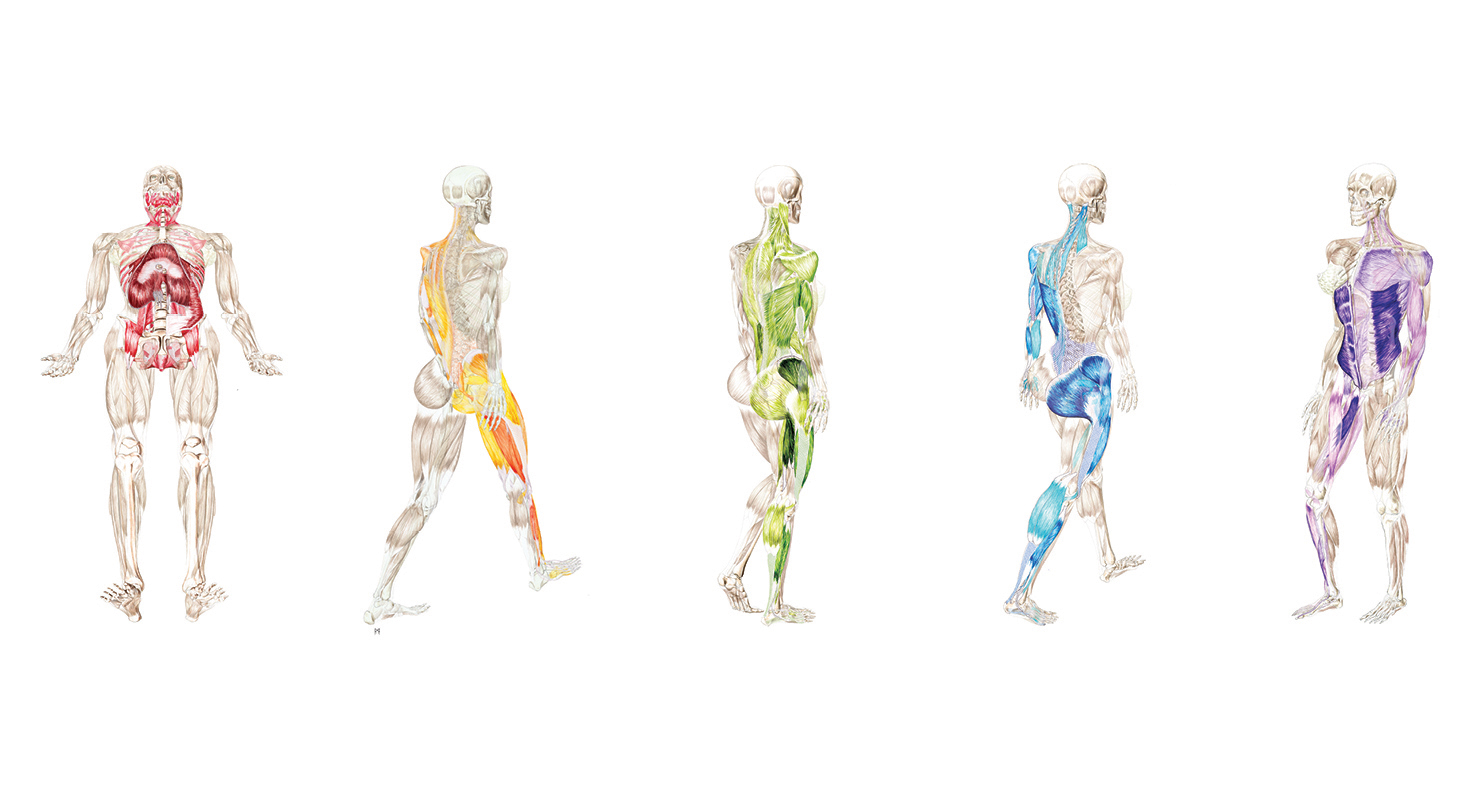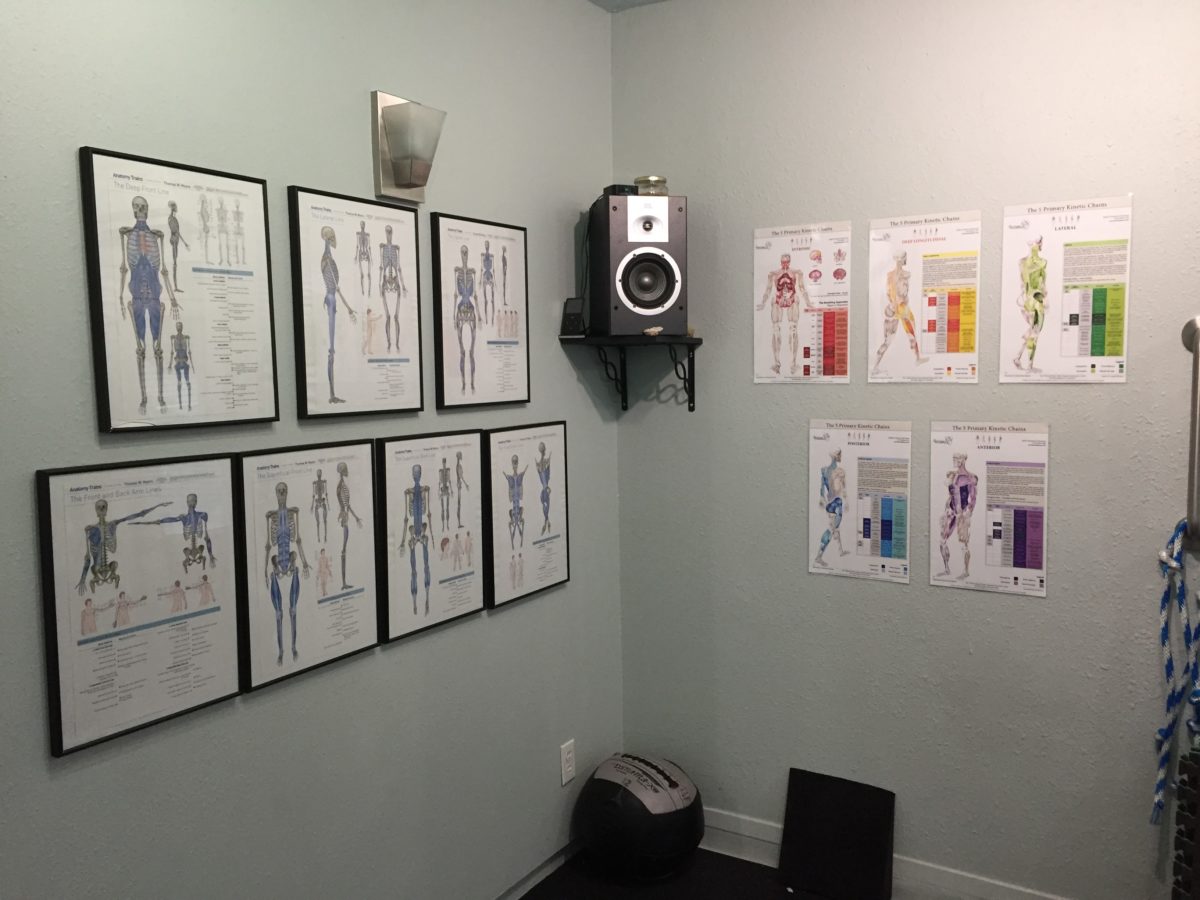
People want to know how the anatomy poster series, The 5 Primary Kinetic Chains, differ from other anatomy posters, specifically Anatomy Train’s Myofascial Meridians.
Let’s start with a little back ground.
I started my exploration of the field of somatics, movement as a therapy, and bodywork strategies, back in 1986. I had suffered a severe injury in a rock climbing fall. I hyper flexed my ankle (dorsal) and broke my talus, the load bone between the leg and the foot. The talus is a unique skeletal bone as it doesn’t have any muscular attachments, rather the talus is held in place by ligaments and the articulation of neighboring joints. I was very fortunate that I didn’t kill the blood supply to the bone and I made phenomenal progress in healing.
I found a great chiropractor that facilitated both manual therapy and movement progressions. I ended up being a case study at Stanford University for the degree of recovery that I realized. I still have a limitation of dorsal flexion, but overall I am very lucky that I met this healer to guide me in what would become my life vocation.
I dabbled with bodywork for a few years before getting formal training in 1992, when I enrolled at Alive & Well, The Institute of Conscious BodyWork in San Anselmo. The school was owned by Jocelyn Oliver and David Weinstock. Jocelyn had pioneered an approach for massage therapy integrating manual muscle testing from Touch For Health. The work progressed and elements of Applied Kinesiology began to integrate as well.
I found myself completely intrigued and absorbed with this approach of changing the response of the nervous system and the structure follows. I sought out as much knowledge as I could about muscle testing, motor control, and strategies in approaching structural change. I was always on the lookout for books that would further my understanding. In my research, I found Dr. George Goodheart’s book, Applied Kinesiology Synopsis. This was the bible of AK and the source to resolve musculoskeletal dysfunction. In a college bookstore, I found another publication, Vernon Brooks’ book, The Neural Basis of Motor Control. I excitingly shared this with my colleagues and teachers. I wanted to understand how cueing in the nervous system with muscle testing could facilitate rapid change in the ability for the structure to respond differently via muscle testing. The Neural Basis of Motor Control helped to answer that question. Both books are out-of-print, but with a little effort can still be found.
A few years later I moved from California to the Austin, TX area. I quickly gained a reputation for the skill sets I had as a bodyworker. Through a series of referrals from the area’s naturopathic doctors, I found I had a group of practitioners that wanted to learn the approach I used in manual muscle testing combined with structural corrections.
Over the course of years, I developed my own hybrid format from the foundation I learned at Alive & Well. I was seeing patterns in movement. I thought of them as maps. I could trace the maps, find the dysfunctional component, correct that component and reinsert it back into the map.
In 2001 or perhaps 2002, Tom Myers came to Austin to teach his new course Anatomy Trains. One of the students in my group took that course. He said to me, “Joseph, you’re not going to believe this, Tom talks about the connection of movement and fascia like you do. Look at these drawings.” When I looked at them, I saw something very similar to the maps I was sharing with my students. I was intrigued; I was not alone in the discoveries I was making.
Several years later Myers’ posters were published. I purchased a set of posters and would refer to them with clients. The myofascial meridians are an excellent map of how structure links together. Practitioners, students and clients have all benefited from their visual reference.
Fast forward to today.
Here is a look at how these two poster series are different yet complementary. The myofascial meridians are looking through the lens of structure. The unification of the fascia, the compartments that bind and wrap the body, including muscles, tendons, ligaments and joints, even the bones themselves (tensegrity and the double bag theory are important concepts every bodyworker should be versed in). Kinetic chains are looking through the lens of movement. The kinetic chains explore how the neuromuscular activation acts on the fascia compartments and how these activations connect, creating a synergistic whole.
Now let’s look at what sets The 5 Primary Kinetic Chains poster series apart.
The 5 Primary Kinetic Chains are based on the movement of the contralateral gait. Our nervous system is hard wired for developmental movement to learn to walk and run so that we can hunt and evade predators, survival.
The 5 Primary Kinetic Chains have roots in the concept of the core subsystems which was introduced by Dr. Andry Vleeming. These core subsystems, slings, or transmission systems, do not operate in isolation from the rest of the musculosketal system. The whole fascia network is involved in movement. A kinetic chain is the synergistic relationship of how structure is responding to movement.
The illustrations of The 5 Primary Kinetic Chains are beautifully done and give a three-dimensional feeling of movement. Each kinetic chain is color coded with three levels of depth that represent the three categories of the muscular relationships. The bold color are the subsystems: the major players in Vleeming’s core slings. The mid-tones are the prime movers: the muscles that have positional advantage to do the most work. The lighter tones are the synergists: the helper muscles. Every part is working in concert to create balanced and efficient movement.
To make it easier for use in a learning or clinical setting the muscle charts are organized joint by joint.
Another feature of the poster series is that each chart has a Principal Action. I refer to this as the Master Template. These five Principal Actions are present in all integrated movement. Our breath, relationship to gravity and shock absorption, dynamic stability through the axis, and ability to store elastic energy — and then translate that elastic energy — is a holistic approach to movement.
The Myofascial Meridians and The 5 Primary Kinetic Chains complement each other, and together unify a more complete understanding of integrated movement.
